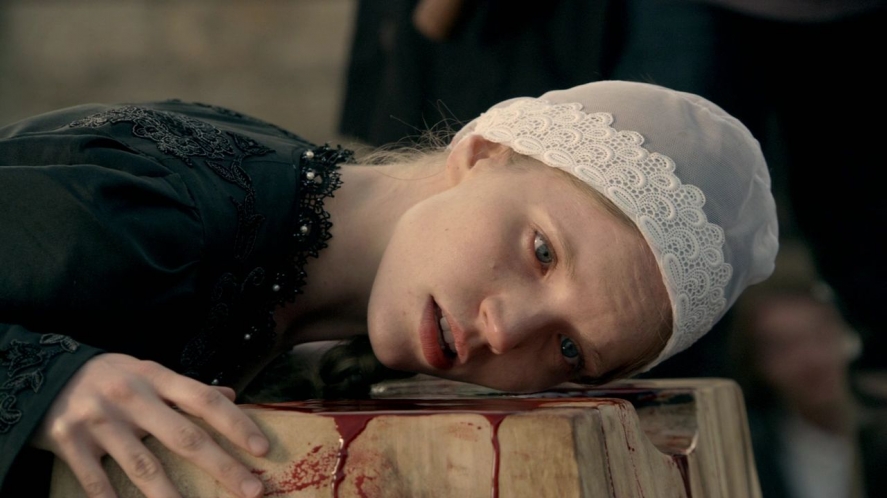The 13th of February 1541 was another anniversary of the execution of Catherine Howard, the 5th wife of King Henry VIII of England. Catherine had been stripped of her title as queen in November 1541 and confined to the Syon Abbey in Middlesex. She remained there throughout the winter of 1541 until Parliament passed a bill of attainder on the 7th of February 1542, and she was then transferred to the Tower of London. Her lovers were Thomas Culpeper (presumably during her marriage to King Henry) and Francis Dereham (during her life at the Dowager Duchess of Norfolk’s household before her wedding to the monarch). On the 10th of December 1541, these two men were hanged, drawn, and quartered at Tyburn for high treason.

Catherine waited for another 2 months before meeting them in heaven. It is interesting that despite everything, her union with Henry was never officially annulled. So, who was Catherine Howard, one of the notorious Henry VIII’s least known wives? Catherine and her portrayals in history and fiction have been rather different: there are many incarnations of Catherine Howard, and one might be confused who this woman really was. Henry referred to Catherine as ‘his rose without thorns’ and ‘a jewel of womanhood,’ and he seems to have been strongly infatuated with her, or with her blossoming youth and beauty. I do not believe that Henry loved Catherine: she made his life merry and breathed a sense of youth into the body of the aging monarch.
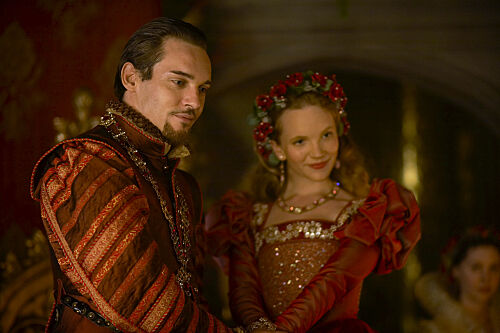
Some think that Catherine was a victim of child abuse. We do not know when Catherine was born: different historical accounts suggest that she was between 15 and 18 when she married Henry on the 28th of July 1540 at Oatlands Palace in Surrey. We only know that she was definitely very young – barely a woman when her life was tied to that of the obese and increasingly ailing ruler of England. Catherine was one of the many offspring ofEdmund Howard (1478-1539) and Joyce Culpeper; she became motherless in 1528 when Joyce passed away. Her father soon remarried Dorothy Troyes, daughter of Thomas Troyes of Hampshire, and the girl was sent to live at the households of her father’s stepmother – Agnes Howard, Dowager Duchess of Norfolk.
The duchess was often at court and was not directly involved in the upbringing of her wards, so the discipline at Lambeth and at Chesworth House was lax. Nevertheless, my opinion is that it would be too much to claim that Catherine Howard was a victim of abuse in childhood. At the same time, I believe that she was definitely running free without supervision, so she could have had dalliances at the time. In about 1536, Catherine started music lessons with 2 teachers. One of them was Henry Mannox, who seems to have been in his late thirties. Some historians such as Retha M. Warnicke think that Mannox preyed upon Catherine and corrupted her, so they had an abusive relationship. Others, including Gareth Russell, reckon that Mannox was approximately of the same age as her, that their interactions were somewhat inappropriate, and that Catherine was growing repulsed by Mannox’s pressure on her to be with him. We will never learn the truth.
In his book ‘Six Wives: The Queens of Henry VIII,’ David Starkey wrote of Catherine:
“A fresh look is needed. Catherine’s behaviour in her step-grandmother’s household has often been seen to indicate that she was a crass, self-indulgent teenager, without a thought in her head, unless others had put it there. But a different reading is possible. Catherine, like many teenagers, certainly showed herself to be wilful and sensual. But she also displayed leadership, resourcefulness and independence, which are qualities less commonly found in headstrong young girls.”

Catherine ceased interacting with Mannox in 1538. Soon Francis Dereham, a secretary of the Dowager Duchess, commenced pursuing the girl, and they supposedly became lovers. Born in 1506/09, Dereham was quite young and could have been handsome, and perhaps hormones played their role in pushing a curious and hot-blooded Catherine into his arms. They allegedly addressed one another as husband and wife. Later, this could have saved Catherine: if Dereham and she acted so, they established a pre-contract according to canon law; yet after her arrest, she claimed that Dereham had raped her. Her accusations deprived her of the opportunity to survive, although the king would have found a way to kill Catherine, for Henry would not have forgiven her for adultery.
In the Victorian era, Catherine’s story was romanticized. She was portrayed as a tragic and romantic young nymph, one who caught the eye of the old, fat, and tyrannical monarch and one who had to marry him because she could not reject the King of England. According to this version, Catherine was in love with Thomas Culpeper, but she had to wed Henry against her will. The tragic love story of Catherine and Culpeper comes from the Spanish Chronicle of King Henry VIII of England’s reign, which tells us of how the couple fell in love before Catherine’s wedding to Henry and says that Culpeper “was much grieved and fell very ill” after the ceremony. I think that such portrayal of Catherine ignores that most likely, she liked Henry’s gifts and attention, as well as the splendor of the court and even more being at the center of the Tudor court as Henry’s queen.
When a woman is so young and is suddenly selected by a monarch as his love and queen, she is likely to be enjoying the merry environment around her and the king’s marvelous gifts. Thus, perhaps Catherine was seduced and a bit spoiled by luxuries and comfort, but this does not make her a bad person and a whore, and it does not make her a romantic heroine either.

In Showtime’s ‘The Tudors,’ Catherine Howard is depicted as one of King Henry’s sexual conquests. The ruler becomes enamored with Catherine after Charles Brandon, Duke of Suffolk, and Edward Seymour, Earl of Hertford, deliberately set her in the monarch’s way. This portrayal is consistent with the image of a material girl who liked jewels, beautiful dresses, and the court splendor. While I agree that Catherine liked expensive things, I disagree with other aspects of her characterizations. In many episodes in “The Tudors,” Catherine is presented naked. However, we see a nude Anne Boleyn in only one episode when she and King Henry had intercourse in Calais. Catherine sleeps with Henry during Thomas Cromwell’s execution. Catherine is again showed naked in her cell even on the night before her execution, when she is practicing with the block.
Catherine’s depiction in this series might be interpreted as one of a naked nymphomaniac, which is rather wrong. Below you can find Catherine’s letter to Thomas Culpeper. She was not as well educated as Henry’s other wives, so there might be some grammatical errors in the text.
Master Culpeper,
I heartily recommend me unto you, praying you to send me word how that you do. It was showed me that you was sick, the which thing troubled me very much till such time that I hear from you praying you to send me word how that you do, for I never longed so much for a thing as I do to see you and to speak with you, the which I trust shall be shortly now. That which doth comfortly me very much when I think of it, and when I think again that you shall depart from me again it makes my heart die to think what fortune I have that I cannot be always in your company. It my trust is always in you that you will be as you have promised me, and in that hope I trust upon still, praying you that you will come when my Lady Rochford is here for then I shall be best at leisure to be at your commandment, thanking you for that you have promised me to be so good unto that poor fellow my man which is one of the griefs that I do feel to depart from him for then I do know no one that I dare trust to send to you, and therefore I pray you take him to be with you that I may sometime hear from you one thing. I pray you to give me a horse for my man for I had much ado to get one and therefore I pray send me one by him and in so doing I am as I said afor, and thus I take my leave of you, trusting to see you shortly again and I would you was with me now that you might see what pain I take in writing to you.
Yours as long as life endures,
Katheryn.
One thing I had forgotten and that is to instruct my man to tarry here with me still for he says whatsomever you bid him he will do it.

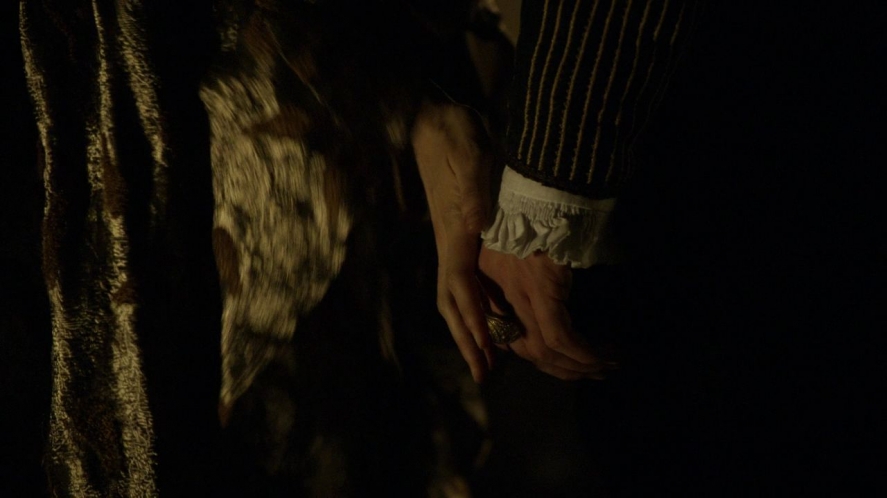
From this letter, we conclude that Catherine Howard was besotted with Thomas Culpeper. This letter proves that Catherine was not a nymphomaniac who slept with men for pleasure’s sake. I’ve never liked her portrayal in ‘The Tudors,’ although I enjoyed watching the show in general despite its many historical inaccuracies. In my opinion, Catherine fell in love with a wrong man, not thinking about the consequences of her affair and forgetting about the fate of her older executed cousin – Anne Boleyn. Henry seems to have lost his male strength due to his ill health by the time of his wedding to Anne of Cleves, and as he failed to consummate his inion with the German princess, the ruler could have been unable to perform conjugal duties with Catherine Howard.
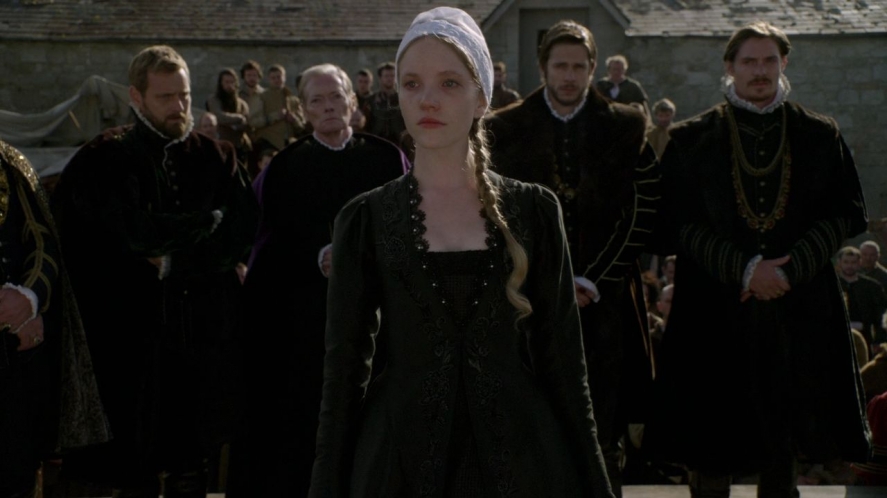
Finally, Catherine was beheaded on the 13th of February 1542, together with Jane Boleyn, Viscounts Rochford, who suffered a mental breakdown during her imprisonment. The affection, which Catherine had for Thomas Culpeper, led to a legend surrounding Catherine’s last words:
“I die a queen, but would rather die the wife of Culpeper.”
In ‘the Tudors,’ Catherine even appears to be happy to die and join Culpeper in the afterlife, and we see her smile and pronounce these words. However, it is a myth that she spoke this way before her death. Catherine never said that, and perhaps the invention of this phrase is an attempt to make her story more dramatic and more romantic. The merchant Ottwell Johnson witnessed the executions of Catherine Howard and Jane Rochford, and he wrote to his brother:
“I see the Queen and the Lady Rochford suffer within the Tower, whose souls be with God, for they made the most godly and Christian end.”
Catherine, according to Ottwell Johnson, behaved in this way:
“… uttered [Catherine’s] lively faith in the blood of Christ only” and “desired all Christian people to take regard unto [Catherine’s] worthy and just punishment”. She [Catherine] said: “justly condemned… by the Laws of the realm and Parliament to die.”
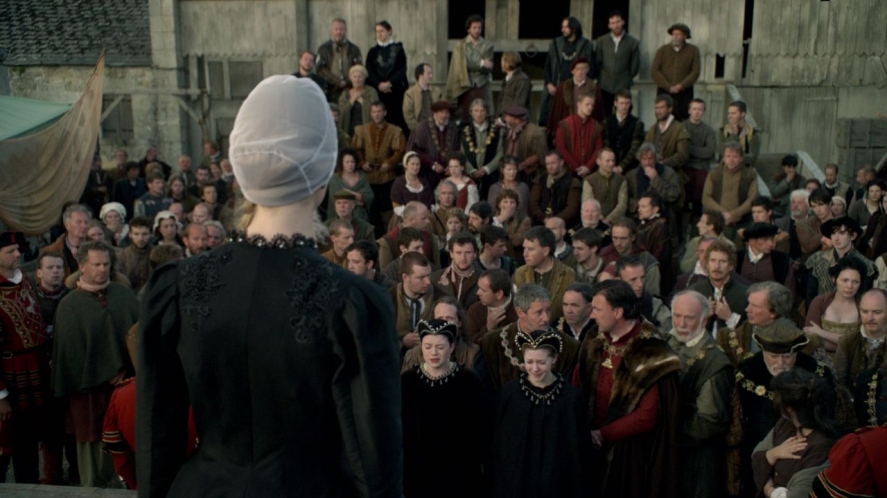
I’m surprised that in some novels Catherine might be portrayed as a calculative woman, one who started a liaison with Culpeper because she needed to get pregnant and pass her bastard child off as the king’s. Again, Catherine’s letter to Culpeper proves exactly the opposite. I do not believe that she was a deceitful and extremely ambitious woman; I do not think that Catherine was a romantic heroine and a self-indulgent girl either. To me, Catherine’s story is the tragedy of a young, material, foolhardy, and flippant girl who married the powerful king and who later fell for a younger man, Culpeper, who risked her own life out of affection for her lover when she wrote that letter. Yes, some of her actions were foolish as she probably thought that her affair would remain a secret forever, so Catherine’s immaturity and emotions must have doomed her.
All images are in the public domain.
Text © 2021 Olivia Longueville

